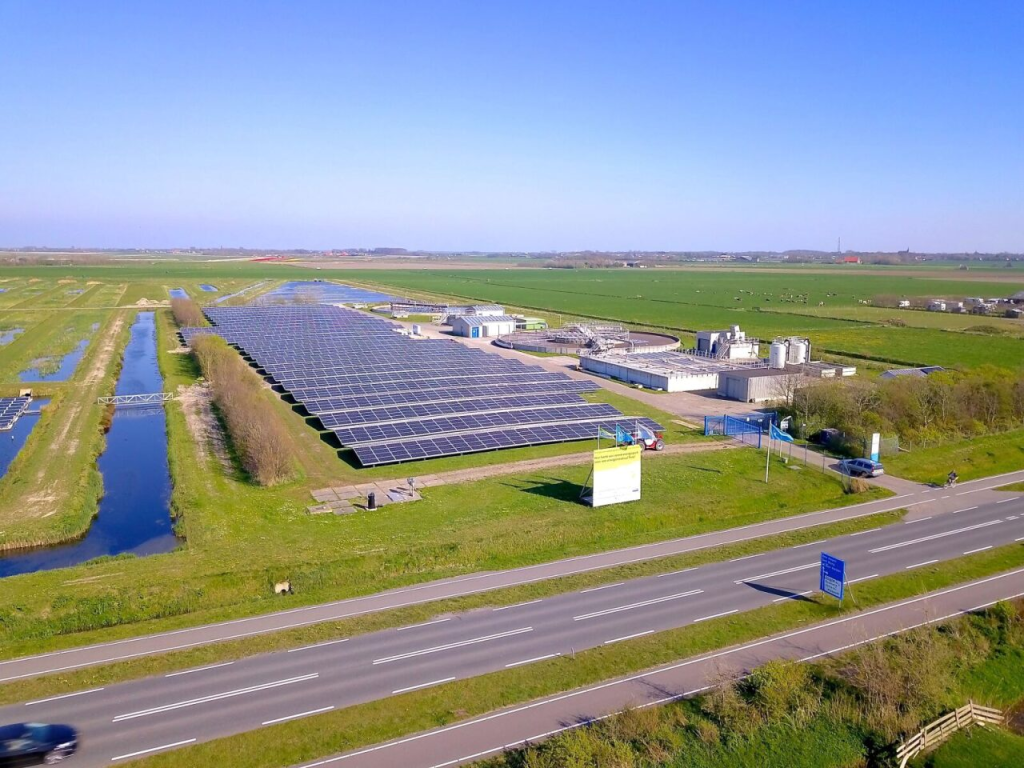ResNRJwater
Given the current energy and climate crisis, we in Northwest Europe want to optimize energy supplies. This is especially true for an energy-intensive sector like water and wastewater infrastructure. Opportunities abound. There is much untapped potential for the generation and use of renewable energy. Treatment plants, wastewater treatment sites and sewers can be used to generate heat and cold, electricity (solar and wind) and green gas. Through the ResNRJwater project, the opportunities are being exploited and self-sufficient energy plants are being developed that can supply rural and urban communities with energy.
What will happen?
The ResNRJwater project focuses on optimizing energy flows at our water board assets such as sewage treatment plants and pumping stations and on butting energy into surface water; or aquathermy. ResNRJwater stands for Resilient Energy Supply.
Within this energy project, HHNK is working with governments and other parties in Belgium, France, Germany, Ireland and Switzerland on knowledge development. There are three main content areas.
Aquathermy
The various experiences of partners in the field of aquathermy will be pooled on a knowledge platform and a knowledge network will be established to visualize the application of aquathermy in many different situations.
Laws and regulations
The University of Galway is going to scrutinize this in terms of producing and relinquishing energy to the grid, and streamlining it where possible.
Making wastewater treatment plants more sustainable
HHNK, like two other partners, is making a sewage treatment plant more sustainable and will even produce more energy there.
Where does the project take place?
The site is the wastewater treatment plant in Zaandam-Oost where the biogas is converted into a green version of natural gas: green gas. A new heat source is needed for the digester and the buildings. Heat from the effluent and reuse of heat from the digested sludge are potential candidates for this. Insulation of digester tanks (energy savings) and a green gas installation will also be considered. Released CO2 will be given a useful application, such as possibly in greenhouse horticulture. In addition, HHNK continues to work on aquathermy in the management area and the Map of heat potential. The knowledge and experience gained will be shared in the knowledge platform.
When will the project take place and how long will it take?
The project officially started on Jan. 1, 2024, and will last until Dec. 31, 2027.
Who do we work with?
HHNK's cooperation partners within ResNRJwater are: Lippeverband (LV), Emschergenossenschaft (EG), BETREM, Territoire d'énergie Loire-Atlantique (TE44), Énergies Renouvelables Loire Atlantique (EnR44), Aquafin NV, Infrawatt and University of Galway.
Interreg
The ResNRJwater project aims at of improving renewable energy production by exploiting unused potential of wastewater in urban and rural areas.

Interreg North West Europe Program, from which ResNRJwater is funded, promotes international cooperation to future-proof the living environment and the program contributes to improved quality of life and well-being for all residents. The program focuses on the living environment, residents of North West Europe and regional inequalities.
Co-financing Province of North Holland
The Province of North Holland is co-funding the project and has provided €100,000.
Budget
HHNK's total project budget is approximately €2,405,000, of which 60% is co-financing from the European Interreg North West Europe Programme 2021-2027 and over 4% from the Province of North Holland.
